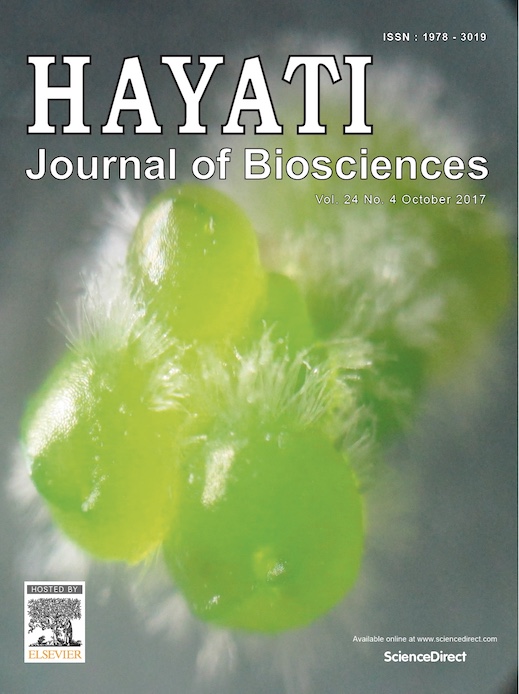Salinity Alters the Polyisoprenoid Alcohol Content and Composition of Both Salt-Secreting and Non–Salt-Secreting Mangrove Seedlings
Abstract
The effects of salinity on the polyisoprenoid alcohol content and composition of the salt-secreting mangrove species Avicennia marina and Sonneratia alba and the non–salt-secreting species Bruguiera gymnorrhiza and Kandelia obovata were studied. The seedlings of mangroves were grown for 5 months under 0% and 3% salt concentrations. The occurrence, content, and distribution of four mangrove seedlings were analyzed by two-dimensional thin layer chromatography. The structural groups of the polyprenols and dolichols in the leaves and roots were classified into two types (I and II). In type I, dolichols predominated over polyprenols (more than 90%), whereas in type II, the occurrence of both polyprenols and dolichols was observed. Polyprenols were not detected in the leaves of A. marina and B. gymnorrhiza under 0% salt (control), but were detected in small amounts in K. obovata leaves; however, significant amounts were found in the 3% salinity group. This finding in A. marina, B. gymnorrhiza, and K. obovata leaves implies a change to the structural group: under 0% salt concentrations, the groups are classified as type I, but become type II under 3% salt concentrations. The occurrence of ficaprenol (C50–55) was found only in the leaves of the non–salt-secreting species B. gymnorrhiza and K. obovataunder 3% salinity and not in the salt-secreting species A. marina or S. alba. It is noteworthy that the polyisoprenoid type in the roots of the four species showed no change under salinity; the two salt-secreting species A. marina and S. alba contained type I under 0% and 3% salt concentrations. On the other hand, type II polyisoprenoids were identified in the non–salt-secreting species B. gymnorrhiza and K. obovata under 0% and 3% salinity conditions. This finding suggested that polyisoprenoids play a protective role against salinity in the mangrove leaves of both salt-secreting and non–salt-secreting species.Downloads
HAYATI J Biosci is an open access journal and the article's license is CC-BY-NC. This license lets others distribute, remix, tweak, and build upon author's work, as long as they credit the original creation. Authors retain copyright and grant the journal/publisher non exclusive publishing rights with the work simultaneously licensed under a https://creativecommons.org/

























.png) IPB University
IPB University Department of Biology
Department of Biology The Indonesian Biological Society
The Indonesian Biological Society 

